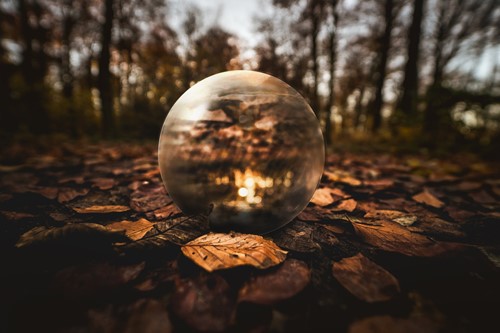Email: JPBPrudent@aol.com

Environmental art became popular in the late 20th century because of growing concern and awareness for the environment. Environmental art has several overlapping characteristics as land art or earthworks, but comments or establishes an opinion on environmental issues. As artists continue to think about the environment as a cohesive system rather than a living space, the appeal and spread of environmental art continues. Here are the basic elements of environmental art to help gain a better understanding of the term.
Environmental artists try to establish their relationship with the natural world in several ways. One way is through bringing their creative workspaces out of the studio and into the environment. This challenges the static concept of a specific place for creating art and instead allows a more integrated relationship with a variety of settings.
Environmental art is all about working with nature instead of against it. Artists who create environmental art take special care in their processes and material usage in order to minimize damage to the surroundings. The health and wellbeing of the environment takes precedence over the artistic process, which also means environmental art is vulnerable to the same changes (such as erosion, flooding and decay).
Besides natural settings, environmental artists use natural materials in creating art. Common examples include sticks and branches, stone, gravel, sand, flowers and leaves. The goal of environmental art is to encourage the viewer to look at the natural environment differently through art. Ultimately, the idea is to create a greater awareness of small but important details of the natural world and our effect on them.
Taking its cue from land art, environmental art exists outside of the commercialized art world. While you may find environmental art in urban areas, you won’t find it in a museum or art gallery. This creates an enhanced accessibility for viewers and allows them to participate in art even if they have never considered or been able to visit an established institution before. A lot of environmental art means to send a message as activism and this denial of the more traditional art world factors into that by giving ownership of the art to nature rather than gallery owners and other organizations.
As science advances and environmental awareness grows, so does the power and popularity of environmental art. Artists who want to send a message about the importance of humanity’s relationship with the natural world can do so in a variety of ways through art. While environmental art exists in many facets and forms, these key elements are the most important in understanding the term.

John is a native Somerville resident and has been a dedicated a real estate sales professional for nearly thirty years. As a strong well respected businessman and former owner of Prudential Buccelli Real Estate, he was thrilled to merge with the Berkshire Hathaway HomeServices Verani Realty brand to expand the global outreach and name recognition for his clients. He has a forward thinking approach, embraces innovation and focuses on all resources to assist his clients. His diverse experience includes residential, commercial, investment land. His experience enables him to understand the challenges of the fluctuations in the real estate industry. John is focused on time tested principles that he has learned on how to produce results and he knows how to respond to the market. He has been involved in thousands of real estate transactions in his long career. Since all real estate is local, he is the area expert!